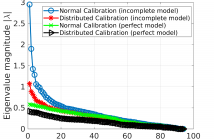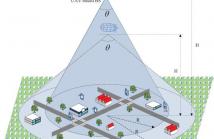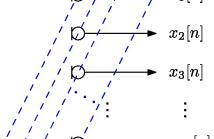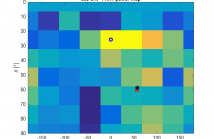
The SAM Workshop is an important IEEE Signal Processing Society event dedicated to sensor array and multichannel signal processing. The organizing committee invites the international community to contribute with state-of-the-art developments in the field.

- Read more about Antenna Array Based Positional Modulation with a Two-Ray Multi-Path Model
- Log in to post comments
Traditional directional modulation (DM) designs are based on the assumption that there is no multi-path effect between
- Categories:
 30 Views
30 Views
- Read more about Performance analysis of distributed radio interferometric calibration
- Log in to post comments
Distributed calibration based on consensus optimization is a computationally efficient method to calibrate large radio interferometers such as LOFAR and SKA. Calibrating along multiple directions in the sky and removing the bright foreground signal is a crucial step in many science cases in radio interferometry. The residual data contain weak signals of huge scientific interest and of particular concern is the effect of incomplete sky models used in calibration on the residual. In order to study this, we consider the mapping between the input uncalibrated data and the output residual data.
lofar75.pdf
lofar75.pdf
- Categories:
 5 Views
5 Views
- Read more about Computationally Efficient Waveform Design in Spectrally Dense Environment (SAM presentation)
- Log in to post comments
- Categories:
 5 Views
5 Views
- Read more about Non-linear source separation under the Langmuir model for chemical sensors
- Log in to post comments
- Categories:
 16 Views
16 Views
- Read more about The Energy-efficient UAV-based BS Coverage in Air-to-Ground Communications
- Log in to post comments
With the increasing trend of unmanned aerial vehi-cles (UAVs) applications, UAV-based base station (BS) has gained significant popularity for rapid deployable networks. Compared with the fixed infrastructure that could be severally disrupted in the case of natural disasters, the UAV-based BSs are easily for deployment and can provide the emergency communication in the target areas. In addition, for the limited power supply in UAV, energy-efficient transmission is also essential in the wireless coverage. Accordingly, in this paper we focus our attention on
- Categories:
 67 Views
67 Views
- Read more about Online Mutual Coupling Calibration Using a Signal Source at Unknown Location
- Log in to post comments
Poster-Wei.pdf
- Categories:
 8 Views
8 Views
- Read more about Rate-Distributed Binaural LCMV Beamforming for Assistive Hearing in Wireless Acoustic Sensor Networks
- Log in to post comments
In this paper, we propose a rate-distributed linearly constrained minimum variance (LCMV) beamformer for joint noise reduction and spatial cue preservation for assistive hearing in wireless acoustic sensor networks (WASNs). The WASN can consist of wireless communicating hearing aids, extended with additional wireless microphones. Due to the fact that each sensor node has a limited power budget, it is essential to consider the energy usage when designing algorithms for such WASNs.
- Categories:
 104 Views
104 Views
- Read more about Super-Resolution Pulse-Doppler Radar Sensing via One-Bit Sampling
- Log in to post comments
This paper investigates the delay-Doppler estimation problem of a pulse-Doppler radar which samples and quantizes the noisy echo signals to one-bit measurements.By applying a multichannel one-bit sampling scheme, we formulate the delay-Doppler estimation as a structured low-rank matrix recovery problem.Then the one-bit atomic norm soft-thresholding method is proposed to recover the low-rank matrix, in which a surrogate matrix is properly designed to evaluate the proximity of the recovered data to the sampled one.With the recovered low-rank matrix, the delays and Doppler frequencies can be d
- Categories:
 64 Views
64 Views
- Read more about Impact of Space-Time Covariance Estimation Errors on a Parahermitian Matrix EVD
- Log in to post comments
This paper studies the impact of estimation errors in the sample space-time covariance matrix on its parahermitian matrix eigenvalue decomposition. We provide theoretical bounds for the perturbation of the ground-truth eigenvalues and of the subspaces of their corresponding eigenvectors. We show that for the eigenvalues, the perturbation depends on the norm of the estimation error in the space-time covariance matrix, while the perturbation of eigenvector subspaces can additionally be influenced by the distance between the eigenvalues. We confirm these theoretical results by simulations.
- Categories:
 19 Views
19 Views
- Read more about Direction of Arrival Estimation with Microphone Arrays Using SRP-PHAT and Neural Networks
- Log in to post comments
The Steered Response Power with phase transform (SRP-PHAT) is one of the most employed techniques for Direction of Arrival (DOA) estimation with microphone arrays due its robustness against acoustical conditions as reverberation or noise. Among its main drawbacks is the growth of its computational complexity when the search space increases. To solve this issue, we propose the use of Neural Networks (NN) to obtain the DOA as a regression problem from a low resolution SRP-PHAT power map.
- Categories:
 210 Views
210 Views